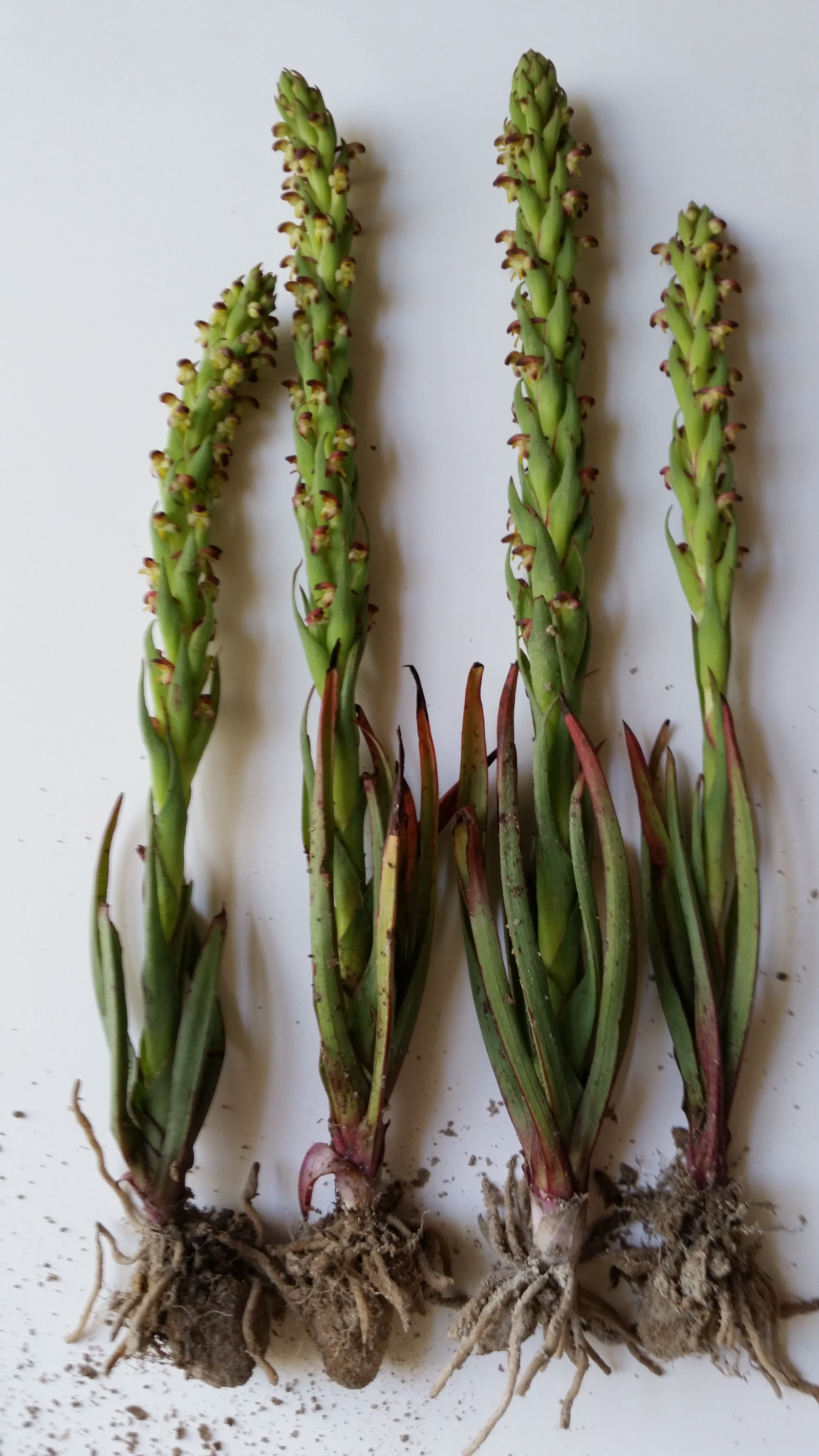South African Weed Orchid – having an invasive season
Posted on 23 December, 2020 by Ivan
South African Weed Orchid, Disa bracteata, has finished flowering but if you are quick you can still help stop the spread of this emerging and highly invasive weed in our area. It is worth havin
g a look for plants on your property and planning for next season’s treatment. We have had many reports from our community of larger infestations in bushlands and grasslands across our region during spring 2020, so we thought it timely to show some photographs of what to look out for, and when.
South African Weed Orchid is a perennial terrestrial orchid with underground tubers. Dormant for much of the year, it sprouts in early spring with a rosette of leaves, followed by flower spikes developing into seeds as the weather drys out during summer. Plants in the leafy, vegetative stage are susceptible to herbicides which during the growing phase also kills the tubers. At later stages digging can be effective but requires care to remove all tubers.
This invasive plant often grows in association with other native orchids but can be distinguished from native species such as Glossodia and Caladenia by the lack of hairs and purple back to the leaf. Sun orchids have smooth leaves but they are single, longer and more channelled.
How to identify South African Weed Orchid:

Treatment by digging out and carefully bagging plant matter helps contain this invasive weed. Photo: Bonnie Humphreys
- Stems – erect and fleshy usually 30–50 cm tall.
- Leaves – a rosette of green leaves with purple undersides, tapering from a broad base to an pointy tip, 5–15 cm long. These weeds are distinct from indigenous Onion Orchids (Microtis spp.) as they have a rosette of leaves, while the native Onion Orchids have one round leaf, often extending above the flower spike. They also have purple undersides, unlike our Onion Orchids
- Flowers – depends on the season but usually around late October through to December in Victoria. 15– 30 flowers grow on a thick cylindrical spike 5–20 cm long, which resembles a greenish-brown asparagus spear. Flowers very dense and are mostly greenish, ripening to reddish-brown and yellow with a leafy bract.
- Seeds – black, minute and dust-like, contained within the capsular fruit. The species is autogamous (self-pollinating) and thus produces a large amount of seed per plant. The main form of dispersal is wind, but seed can also be spread on shoes, clothing and vehicles, as well as in water and through animal and soil movement. The seeds can remain viable for years, hence one seeding plant this year means many weeds for many, many years to come. Seed set and dispersal starts as the plants mature and as the weather dries out. The seeds continue to mature even if the flower head is picked, so it is very important to bag up and remove.

The weed orchid has 1–3 tubers about 20 mm long. Photo: Bonnie Humphreys
- Tubers – produces new tubers each year it grows. These are similar in appearance to a small potato, about 20 mm in size (depending on conditions). The plant will also have a small shrivelled tuber, which is the one the plant is using to grow from currently. The plant also has a mass of fleshy roots and there is no main tap root.
Invasion of the Mount Alexander region
As of 2020, this weed has been recorded across the Mount Alexander Shire in Chewton, Redesdale, Elphinstone, Taradale, Walmer, Barkers Creek, Sutton Grange, Guildford, Ravenswood and Harcourt. The records on the Atlas of Living Australia (ALA) suggest that this species has been recorded across many sites in Victoria and Western Australia, with a total of 1,400 records entered onto the ALA.
Treatment
Manual removal requires digging up and removing all parts of the plant, including the tuber, leaves and flowers. The plant material must be bagged securely (e.g., in a snap-lock bag) to prevent the fine dust-like seed from spreading further. It is also worth making sure that the soil around the plant is put back after removal, to reduce the risk of regrowth.
If you are interested in seeing some excellent photos at different stages of its lifeform across the year, local legends Euan Moore and Jenny Rolland have prepared the following collage of images. Many thanks to Euan and Jenny for their photos and information, and passion for controlling this invasive emerging weed.
To learn more about this emerging weed and see a map of its current distribution, please visit the ALA website by clicking on the image below (courtesy of ALA).














WE have a block in Reid’s lane Halls Gap and I have dug out literally hundreds of plants over a period of several years. Is there any other way of eliminating these pests. They love to grow with native orchids but are very heady and I fear they will take over .
Hi James,
Sorry to hear of your weed orchid issues. Unfortunately these plants are very good at surviving in our climate. I don’t have any fail safe solutions. The best tips I can give is to make sure any dug up plants are placed in sealed containers and removed from site. There is some work around the use of herbicide to aid in control of this species. The following link is from the Hamilton Field Naturalists Club. This technique maybe further effective as you are not also disturbing the soil and creating new fresh seed beds. Would love to hear how you go.
https://www.hamilton-field-naturalists-club-victoria.org.au/images/pdf/FloraReports/FloraConservationManagement/controlling-weeds-by-herbicide-wiping-2016.pdf
is it possible to kill this orchid with glyphosate